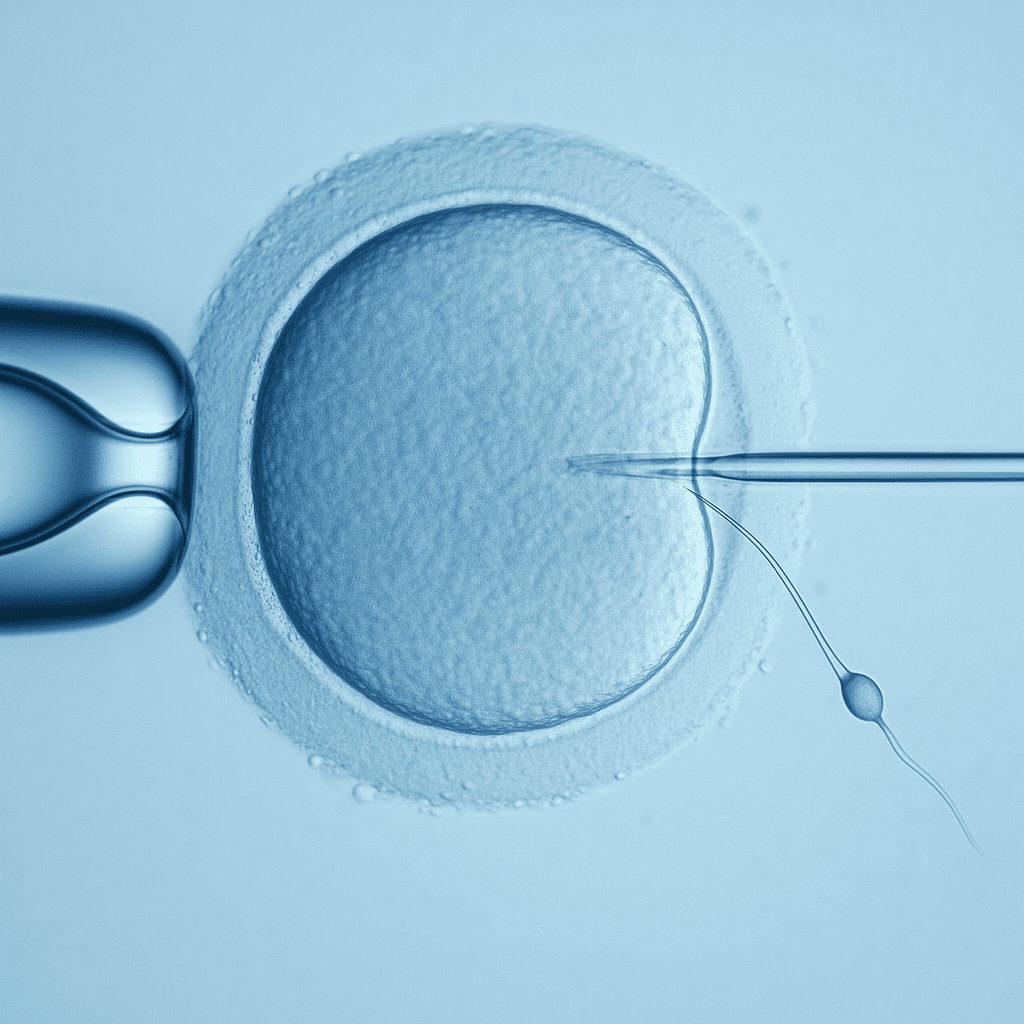World’s First AI-Driven IVF Baby: Breakthrough in Fertility Technology Reduces Human Error & Enhances Precision

Table of Contents
Another success in the field of artificial intelligence increases success rates, improves embryo selection, and fertility treatments like never before. The world’s first baby is born through an AI-driven IVF procedure, utilizing advanced robotics and technology developed in the UK. The field of reproductive medicine has gone through a revolutionary transformation in medicine with the integration of Artificial Intelligence (AI) into In Vitro Fertilization (IVF). In recent years, several babies born through AI-assisted IVF, which has marked a significant milestone in medical science. The successful birth was done by a 40-year-old woman treated with donor eggs at Hope IVF Mexico in Guadalajara, following a previously unsuccessful IVF attempt that had produced only one mature egg and no embryos.
Traditionally, in the late 19th century, scientists started studying fertilization outside the body in animals through the latest technology In-vitro fertilization (IVF). In 1890, Walter Heape experiments reported the first successful embryo transfer in rabbits. Later, in 1950, scientists greatly achieved the most important emotional aspects where a woman never conceived will solve this problem by this technology as it keep eggs and sperm alive outside the body, also create an artificial embryo later on.
The Role of AI in IVF
The most important task of AI is in embryo selection, where traditional methods rely on manual assessment by embryologists based on morphology. The latest achievement in the field of medical with the AI-powered algorithms now analyze thousands of embryo images with greater accuracy, using deep learning models such as Embryo Scope, and identify the highest-quality embryos. However, AI-driven predictions like cell division patterns and genetic health can be used to recommend the most viable embryos for successful implantation.
Beyond embryo selection, AI helps in creating a plans by analyzing patient data, including age, hormone levels, past IVF cycles history, optimal dosage of fertility drugs, the ideal timing for egg production, and the best implantation window which induces the step to maximize success in the field of AI generated IVF baby. AI creates the genetic screening where the chance of detection of chromosomal abnormalities in embryos increases. However, the AI improves the speed and accuracy of the genetic of patient, which assures only the healthiest embryos are selected, reducing the risk of genetic disorders and increasing successful pregnancies.

IVF Procedure with AI and Robotics
- The initial step is to start with ovarian stimulation when fertility drugs prompt the ovaries to release multiple eggs instead of a single egg which is discharged in the menstural cycle. To monitor earlier doctors used to use blood test but now AI-driven ultrasound machines monitor the development of the follicle in real time and check size, shape, and patterns of growth and determines the best time to determine the best time for retrieving the eggs. AI enhances drug dosages that minimize the risk of ovarian hyperstimulation syndrome (OHSS) and enhances egg yield.
- The second step is egg retrieval after the follicles reaches the optimal maturity. Previously, a physician employs an ultrasound-guided needle to articulate the eggs with precision. With robotics and AI, high-resolution imaging that can view the 3D image of ovaries, without injury to blood vessels and least damage to tissue.
- During egg retrieval, sperm samples are harvested and processed. AI-driven Computer-Assisted Sperm Analysis (CASA) evaluating sperm viability based on motility, shape, and DNA integrity. AI examines thousands of sperm cells in seconds. Moreover, it can filter out abnormally shaped cells while keeping good-quality sperm, thus improving the chances of successful fertilization.
- When male infertility or past IVF failure is present, Intracytoplasmic Sperm Injection (ICSI) is applied, where a single sperm is injected into an egg directly. The process needs utmost precision, as human mistake can destroy the egg. Using high-end AI technology, Robotic microinjectors execute ICSI technology which is a successful sperm insertion without damaging the egg. The AI enhances egg quality, identifies injection point, and manages the robotic needle’s movement to reduce cellular stress.
- After fertilization, embryos are produced in incubators for 3-6 days. earlier, incubators require frequent manual checks of the embryos to changes in temperature and pH. Now AI enabled incubators provide a stable environment with continuous monitoring. AI tracks cell division patterns, blastocyst formation, and metabolic activity, comparing each embryo to a vast dataset of successful pregnancies. Deep learning algorithms sort embryos according to viability, choosing those with the greatest implantation potential. This removes human bias and increases the likelihood of a healthy pregnancy.
- The last step is implanting the highest-quality embryo into the uterus. This was previously done manually with catheters. But, with AI Robotic catheter placement, it is assisted by positioning the embryo in the best uterine location with sub-millimeter precision. Once the embryo is implanted into the uterus, AI tracks early pregnancy, hormonal transformation, and implantation information continuously. If pregnancy is achieved, AI tracking of fetal growth and detect early complications.
The integration of AI and robotics in IVF is revolutionizing fertility treatments, providing greater accuracy, efficiency, and success rates. Right from AI-assisted embryo selection to robot-assisted fertilization, technology is not only making IVF safer but also more effective than ever.



